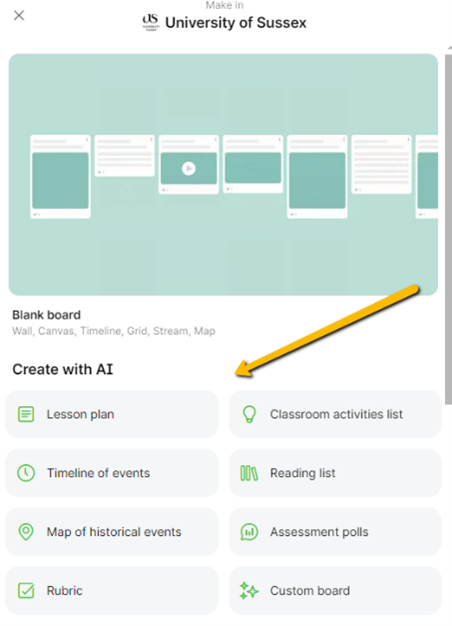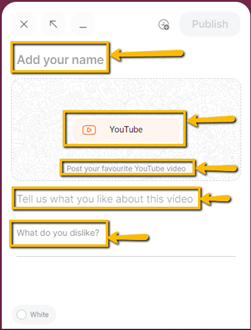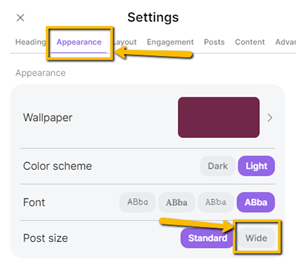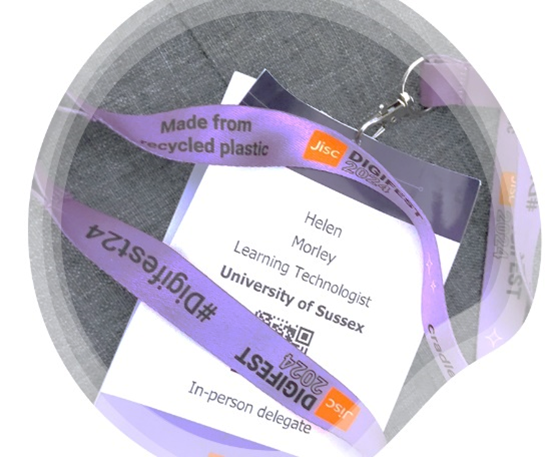by Helen Morley, Learning Technologist, University of Sussex
It’s me again, so you can be pretty certain this blog is AI-focused!
Disclaimer: Blogs capture a moment in time; the information and any guidance or insights in this blog is accurate on 6 June 2024. If you’re reading this and want to check if there has been an update, please visit our website here: https://staff.sussex.ac.uk/teaching/enhancement/

This semester (Spring 23/24) we have seen even more developments in the use of artificial intelligence at the University of Sussex. Topics covered in editions of this blog include:
- Updates to Padlet (Rachael Thomas)
- Discussions around AI at a national conference (Helen Morley)
- An Update on the Community of Practice (Dr Sam Hemsley)
- A Reflection on AI Potential, Promise and Peril (Chris O’Reilly)
- Some ideas and explanations for talking to students about AI (Dr Sam Hemsley)
- A study (?) of how to name the phenomenon of AI “hallucination” (Helen Morley)
And Dr Verona Ni Drisceoil shared fascinating insights on assessment using AI on EE’s other blog, Learning Matters.
As we come to the end of the academic year, we have some exciting news to share!
Preferred Platforms
We now have two preferred platforms at Sussex. Preferred platforms are supported by ITS and have been subject to scrutiny for GDPR and other concerns. Sussex staff and students will be able to access the platforms using their login details (abc123@sussex…) and doing so ensures that any content uploaded or created stays within our “walled garden” meaning it cannot be accessed by outside agencies. Having preferred platforms also supports our commitment to equality of opportunity as all students will be able to access the resources.
Microsoft CoPilot
As an organisation that uses Microsoft Office, we have institutional access to CoPilot, which is Microsoft’s “AI companion” or “digital assistant”, depending on which part of their website you’re reading. You can read more about this in the news announcement from the Better Sussex team on their news article. Currently, we have the version which offers “chat” and composition options; there is a more advanced option which can engage with other Microsoft apps such as PowerPoint which we don’t have yet due to cost and other concerns. When you use CoPilot, please make sure you are logged in using your Sussex account (e.g. abc123@sussex…) to ensure you are working within the protections offered by our licence.
Adobe Firefly
We have had a licence with Adobe for many years and are pleased that they are including Firefly, which is an image generating platform, in their provision. Adobe Firefly can create images from text prompts and interact with images the user uploads. You can add specific details in your prompt, e.g. specifying a cartoon style, and there is also a menu of variables you can select from including tone, lighting and “camera” angle. As with most AI tools, please be aware of the biases Firefly has; for example the image at the top of this blog is supposed to be of “an academic” and I’m sure you all know many academics who look nothing like the output!
Support and Guidance
CoPilot and Firefly are supported by the ITS team. If you are using them for teaching and would like some guidance, please contact your school’s learning technologist or the EE team. Colleagues from Educational Enhancement have already started sharing tips and quick guides on the preferred platforms and there will be a self-study Canvas course available in the near future.
Piloted Products
One of (many) great things about being a learning technologist at Sussex is the opportunity to take part in pilots for tools and software. There are some pilots in progress at the moment and I’m going to write about the one I was fortunate to lead.
Jamworks
In January we successfully applied to be part of a pilot run by Jisc to test the notetaking tool Jamworks. Jamworks integrates with Panopto to create transcripts and uses AI to generate highlights and quizzes which are sourced entirely from recorded lecture content.
We had two cohorts of students, and their lecturers, take part in the pilot and one more group will run during vacation teaching. Responses from the academics were largely positive and we were all impressed by Jamworks’ scope as an assistive tool for students with diverse requirements.
Observations we made included:
- It was easy to set Jamworks up and integrate it with Panopto; it was particularly useful that students could access past recordings and not just ones that were made after we had started trialling the tool.
- The accuracy of the notes was impressive, including subject-specific terminology which other lecture capture transcripts can occasionally make errors with.
- The highlights were useful but in some cases Jamworks could have been a lot more discerning as they could be quite long.
- The options for students to adjust their settings, including using a focused reading pane, was great to see and a definite win for accessibility.
- We missed having the option to run reports on student usage and engagement, but we recognise Jamworks is fundamentally a learning support tool and not a teaching or monitoring tool.
When I reviewed my notes on Jamworks in anticipation of creating my evaluation, I watched a recording of an early meeting when it was demonstrated to the different university teams taking part in the pilot. I have taken a screenshot of my face at one point, which I think illustrates that I was seeing something I liked:
Next Steps
It is our ongoing commitment to support the adoption of appropriate and exciting technologies to enhance education at Sussex. If you’d like to take part in future pilots like the Jamworks one please get in touch and register your interest. Also, do come along to events like the AI Community of Practice (next dates tbc) and the Sussex Education Festival 2024 (10 and 11 July).
















